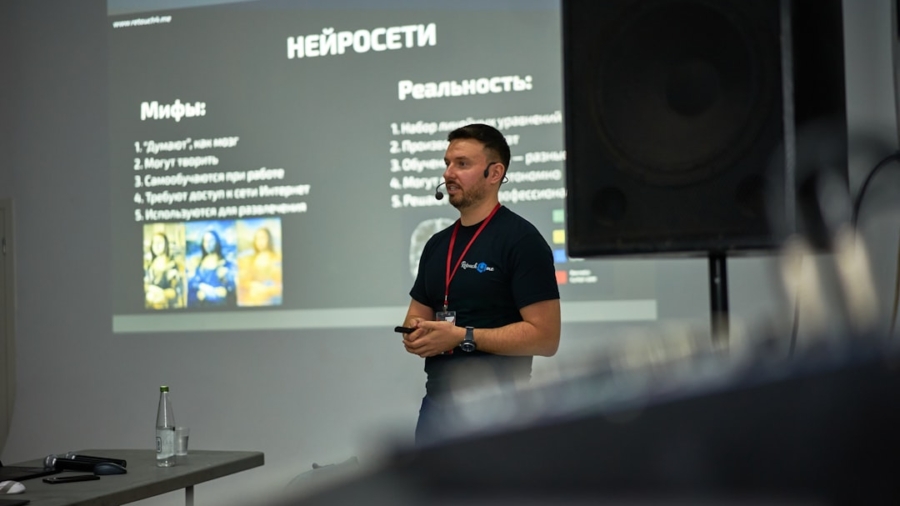Virtual Reality (VR) has emerged as a transformative technology in various sectors, and its application in military training exercises is particularly noteworthy. The military has long recognized the importance of realistic training environments to prepare personnel for the complexities of modern warfare. Traditional training methods, while effective, often fall short in replicating the dynamic and unpredictable nature of real combat scenarios.
VR technology offers a solution by immersing soldiers in lifelike simulations that can be tailored to specific missions, environments, and threats. This innovative approach not only enhances the realism of training but also allows for safe, repeatable, and cost-effective exercises. The integration of VR into military training exercises is not merely a trend; it represents a paradigm shift in how armed forces prepare their personnel.
By leveraging advanced graphics, haptic feedback, and interactive scenarios, VR can create an environment where soldiers can practice decision-making, teamwork, and tactical skills without the risks associated with live training. As militaries around the world seek to modernize their training programs, VR stands out as a critical tool that can bridge the gap between theoretical knowledge and practical application. This article delves into the advantages of VR in military training, examines real-world implementations, explores the technology behind it, and discusses the challenges and future trends shaping this field.
Key Takeaways
- VR applications in military training exercises offer a realistic and immersive training experience for soldiers.
- The advantages of using VR in military training include cost-effectiveness, safety, and the ability to simulate various combat scenarios.
- A case study on the implementation of VR in military training exercises demonstrates its effectiveness in improving soldier readiness and performance.
- VR technology used in military training exercises includes head-mounted displays, haptic feedback devices, and realistic simulation software.
- Challenges and limitations of using VR in military training include motion sickness, equipment maintenance, and the need for specialized training for instructors.
The Advantages of Using VR in Military Training
One of the most significant advantages of using VR in military training is the ability to create highly realistic and immersive environments that closely mimic real-world scenarios. This level of immersion allows soldiers to experience the sights, sounds, and even the emotional stress of combat situations without the inherent dangers of live exercises. For instance, VR can simulate urban warfare, where soldiers must navigate complex terrains filled with civilians and potential threats.
This kind of training prepares them for the unpredictability of actual combat, enhancing their situational awareness and decision-making skills. Moreover, VR training can be conducted at any time and in any location, eliminating the logistical challenges associated with traditional training exercises. Soldiers can engage in VR simulations from their bases or even at home, making it easier to fit training into their schedules.
This flexibility not only increases the frequency of training sessions but also allows for more personalized learning experiences. Instructors can tailor scenarios to address specific weaknesses or objectives for individual soldiers or units, ensuring that each participant receives targeted training that meets their unique needs.
Case Study: Implementation of VR in Military Training Exercises

A notable example of VR implementation in military training is the U.S. Army’s Synthetic Training Environment (STE). Launched as part of a broader initiative to modernize military training, STE utilizes advanced VR technology to create a comprehensive training platform that integrates various simulation tools.
This system allows soldiers to train in a virtual world that replicates real-world environments and scenarios, from urban landscapes to rural terrains. The STE enables units to conduct collective training exercises that enhance coordination and communication among team members. In one specific exercise using STE, soldiers were tasked with executing a complex mission involving reconnaissance and engagement with enemy forces in an urban setting.
The VR simulation provided real-time feedback on their performance, allowing them to analyze their decisions and tactics post-exercise. This immediate debriefing process is crucial for reinforcing learning outcomes and ensuring that soldiers can apply lessons learned in future operations. The success of STE has prompted other branches of the military to explore similar VR solutions, highlighting the growing recognition of VR’s potential in enhancing training effectiveness.
VR Technology Used in Military Training Exercises
The technology underpinning VR applications in military training is multifaceted and continually evolving. At its core, VR relies on sophisticated hardware and software systems that create immersive experiences for users. Head-mounted displays (HMDs) are among the most critical components, providing soldiers with a 360-degree view of their virtual environment.
These devices are often equipped with advanced sensors that track head movements and adjust the visuals accordingly, ensuring a seamless experience that enhances immersion. In addition to HMDs, haptic feedback devices play a vital role in simulating physical interactions within the virtual space. For example, soldiers can use specialized gloves or controllers that provide tactile sensations when they interact with virtual objects or engage in combat scenarios.
This technology not only enhances realism but also helps soldiers develop muscle memory for specific tasks, such as weapon handling or equipment operation. Furthermore, VR systems often incorporate artificial intelligence (AI) to create adaptive scenarios that respond dynamically to a soldier’s actions, adding another layer of complexity to training exercises.
Challenges and Limitations of Using VR in Military Training
Despite its numerous advantages, the integration of VR into military training is not without challenges and limitations. One significant concern is the potential for motion sickness or discomfort among users during extended VR sessions. The immersive nature of VR can lead to disorientation or nausea if the technology is not properly calibrated or if users are not accustomed to the experience.
Addressing these issues requires careful design considerations and ongoing research into user comfort and safety. Another challenge lies in the high initial costs associated with implementing VR technology. While long-term savings may be realized through reduced logistical expenses and increased training efficiency, the upfront investment in hardware, software development, and infrastructure can be substantial.
Additionally, there is a need for skilled personnel who can operate and maintain these systems effectively. As militaries adopt VR solutions, they must also consider how to integrate this technology into existing training frameworks without disrupting established practices.
The Impact of VR on Military Training Effectiveness

The impact of VR on military training effectiveness is becoming increasingly evident as more units adopt this technology. Studies have shown that soldiers who engage in VR training often demonstrate improved performance in real-world scenarios compared to those who rely solely on traditional methods. The immersive nature of VR allows for repeated practice in high-stress situations, which can enhance retention of skills and knowledge over time.
Furthermore, VR facilitates collaborative training exercises that promote teamwork and communication among soldiers. In a virtual environment, multiple participants can engage in complex missions simultaneously, allowing them to practice coordination and strategy development in real-time. This collaborative aspect is particularly beneficial for units that must operate cohesively under pressure during actual deployments.
As a result, the integration of VR into military training not only enhances individual soldier performance but also strengthens unit cohesion and operational readiness.
Future Trends and Developments in VR for Military Training
Looking ahead, several trends are likely to shape the future of VR in military training exercises. One significant development is the increasing use of mixed reality (MR) technologies that combine elements of both virtual and augmented reality (AR). MR allows for more interactive experiences by overlaying digital information onto the real world, enabling soldiers to train in environments that blend physical and virtual elements seamlessly.
This could lead to more versatile training scenarios that adapt to various operational contexts. Additionally, advancements in AI will continue to enhance the capabilities of VR training systems. AI-driven simulations can create more realistic adversaries that adapt their tactics based on a soldier’s actions, providing a more challenging and engaging training experience.
Furthermore, as data analytics becomes more sophisticated, militaries will be able to gather insights from training sessions to refine their programs continually. This data-driven approach will enable more personalized training regimens tailored to individual soldier needs and performance metrics.
The Role of VR in Enhancing Military Training Exercises
The role of virtual reality in enhancing military training exercises cannot be overstated.
By immersing soldiers in lifelike simulations, VR not only enhances individual skills but also fosters teamwork and strategic thinking essential for success on the battlefield.
The ongoing development of mixed reality systems, AI-driven simulations, and data analytics will further refine how militaries approach training exercises. While challenges remain regarding user comfort and implementation costs, the benefits of VR are clear: it represents a significant leap forward in preparing soldiers for the realities they will face in combat situations.
As such, embracing this technology will be crucial for maintaining operational readiness and effectiveness in an ever-changing global landscape.
In the realm of technological advancements, virtual reality (VR) has emerged as a transformative tool, particularly in military training exercises. The case study on VR applications in military training highlights the innovative ways in which this technology is being utilized to enhance the preparedness and effectiveness of military personnel. A related article that delves into the broader implications of technology in various fields can be found on The Next Web, which provides insights into the world of technology. This article explores how cutting-edge technologies are reshaping industries and can be accessed through this link. By examining these resources, one can gain a comprehensive understanding of the pivotal role technology plays in modern training and operational strategies.
FAQs
What is VR?
VR stands for virtual reality, which is a computer-generated simulation of an environment that can be interacted with in a seemingly real or physical way by a person using special electronic equipment, such as a helmet with a screen inside or gloves fitted with sensors.
How is VR used in military training exercises?
VR is used in military training exercises to create realistic and immersive simulations of combat scenarios, vehicle operation, medical training, and other military-related activities. This allows soldiers to practice and improve their skills in a safe and controlled environment.
What are the benefits of using VR in military training exercises?
The benefits of using VR in military training exercises include cost savings, increased safety, the ability to simulate a wide range of scenarios, and the opportunity for soldiers to practice and improve their skills in a realistic and immersive environment.
What are some examples of VR applications in military training exercises?
Some examples of VR applications in military training exercises include simulating combat scenarios, vehicle operation, medical training, and virtual boot camps for new recruits.
Are there any limitations to using VR in military training exercises?
Some limitations to using VR in military training exercises include the initial cost of equipment and software, the need for specialized training to operate and maintain VR systems, and the potential for simulation sickness in some users.

